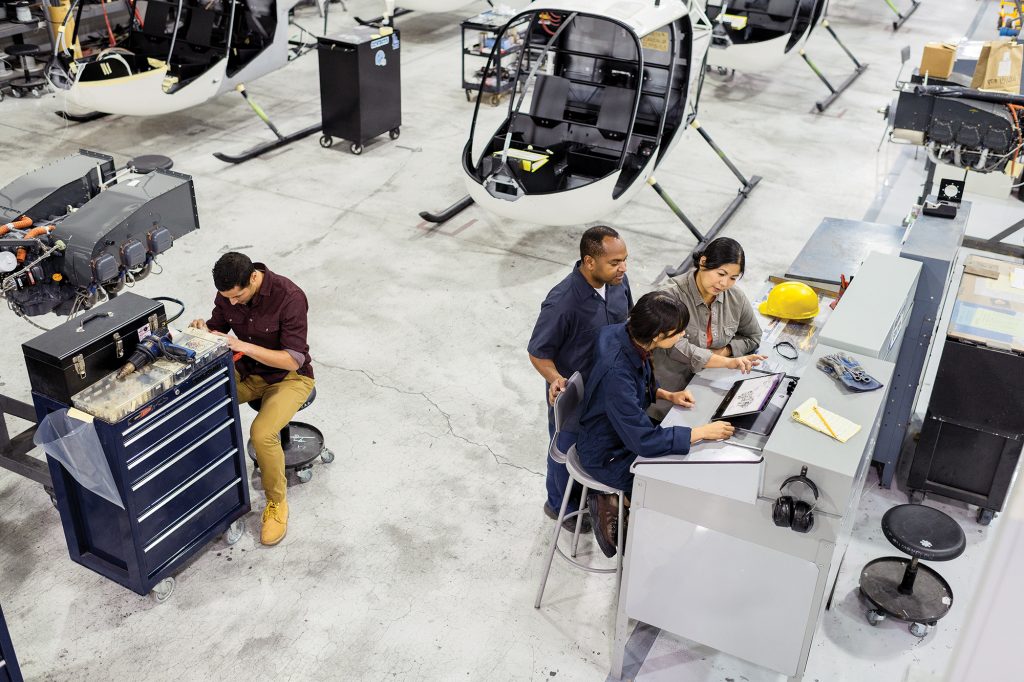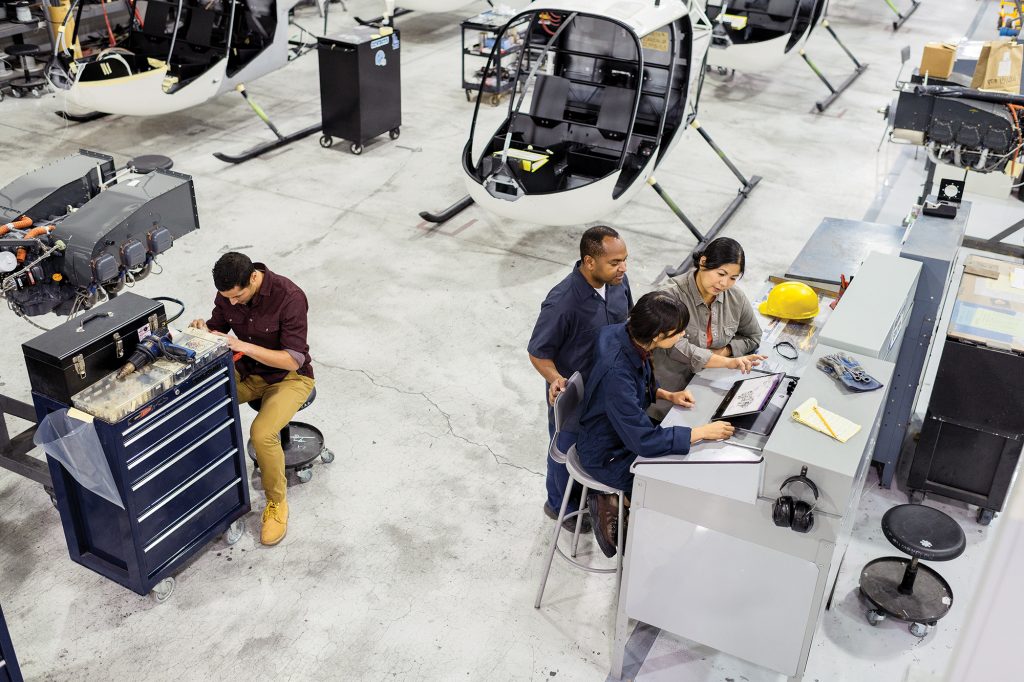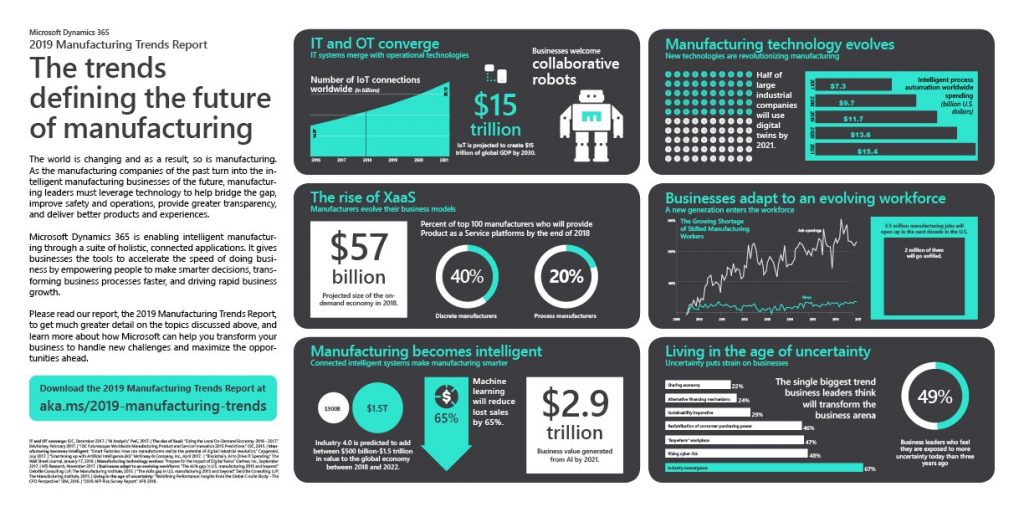
Why Services are the Future of Manufacturing

In today’s market full of feature-saturated products and super competitive prices, manufacturers are exploring new service-based business models that will allow them to expand margins and build stronger relationships with customers. Many are discovering that adding services to their portfolios allows them to differentiate their offerings and gain a competitive edge.
Who needs a factory?
While contract manufacturing has always been a service, digitization is changing the way products are designed and the way contract manufacturers produce those products. These changes have led to the expansion of Manufacturing as a Service, where businesses can leverage a shared network of manufacturing infrastructure—from machines and maintenance to software and networking—to produce goods.
With manufacturer networks, such as Dassault Systemes’s 3DExperience Marketplace, customers submit projects to in-network manufacturers, who then review the designs and provide fast, precise quotes. This reduces administrative burden as well as manufacturing costs. In the case of a singularly managed network, a customer can send an order for a part and based on workload, materials, workforce availability, location, and scale, the network will dynamically route the order to a given facility, or set of facilities, to most efficiently fulfill the request.
Manufacturing as a Service is having a significant impact on the cost and speed of R&D and prototyping, especially for high tech products such as semiconductors. Accordingly to Gartner, a new semiconductor fabrication plant (fab) can cost upwards of $6 billion. This cost of entry is completely unaffordable for many companies looking to enter or grow in this space; however, manufacturing fab companies, like TSMC, now offer services to do manufacture chips for “fabless” companies. The availability of these manufacturing services—coupled with the opportunity to design and iterate new chips at a lower cost—has spawned the development of new chip design companies and many innovations in the space. Like many other XaaS business models, Manufacturing as a Service helps businesses move money from CAPEX to OPEX, freeing up capital for investment in research and development, marketing, and sales.
When customers pay for the experience, not the product
In Product as a Service business models, the physical products, software, and support are delivered as a service or virtualized experience, and the buyer no longer takes ownership of a physical product. Based on some early projections from IDC, upwards of 40% of the top 100 discrete manufacturers and 20% of top 100 process manufacturers will provide Product as a Service platforms by the end of 2018.
Product as a Service isn’t new—Rolls-Royce introduced its Power-by-the-Hour service in 1962, offering engine and accessory replacement service for the company’s Viper engines on a fixed-cost-per-flying-hour basis—but new technology is expanding how manufacturers offer it.
Easier data collection, enabled by improvements in sensor technology, is one of the factors driving this trend. Sensors have become smaller, more powerful, and less expensive (the average sensor will cost $0.38 by 2020, down from $1.30 in 2004, according to a study by Goldman Sachs). A MarketsandMarkets study projects that the market for sensors will increase to $5.6 billion in 2018. These sensors have a range of potential applications, including the ability to capture near real-time feedback about manufacturing operations and product usage.
Additionally, the cloud has enabled manufacturers to more easily unify data from across all touch points within the value chain. Coupled with artificial intelligence and machine learning, this unification allows them to gain profound insights into their data, process information faster, and intelligently automate actions. Recent advances in computer processing now enable these functions to run at a scale which was not previously possible, informing product development, improving sales, and enhancing customer support.
As products become more intelligent and connected, it becomes harder to distinguish the product from the technology on which the product runs—particularly the software. The convergence of hardware and software ties the ongoing use of the product directly to the manufacturer, as customers may become reliant upon the manufacturer for software support and updates. This allows manufacturers to build an ongoing relationship with customers over the lifecycle of a product, augmenting products with digital services, providing support, and adding functionality to existing products via wireless software updates.
Business intelligence gives birth to digital services
As technology such as IoT, artificial intelligence, and machine learning provides manufacturers with greater visibility into their products and operations, companies are leveraging this information to build digital services—such as predictive maintenance—to expand their value to clients.
ThyssenKrupp, a German multinational conglomerate and the world’s fifth-largest elevator company, drew upon IoT technology to connect its elevators to the cloud. Data collected from an elevator’s sensors allows algorithms to process that information and predict when maintenance is required—before the elevator breaks down. This predictive maintenance is further enhanced by the use of augmented reality, with elevator technicians utilizing Microsoft HoloLens to receive remote, hands-free instructions from experts while they’re in the field. Initial field trials showed that elevator technicians were able to fix problems four times faster using HoloLens technology than without it. By outfitting competitor elevators with their sensors, ThyssenKrupp has been able to extend this service offering beyond their existing customer base, further enhancing their competitive edge.
In addition to Manufacturing as a Service, Product as a Service, and the digital services discussed above, cloud networked manufacturing opens up a broad range of services for manufacturers to explore, including Design as a Service (DaaS), Experimentation as a Service (EaaS), Equipment as a Service (EaaS), Simulation as a Service (SIMaaS), Management as a Service (MaaS), Maintenance as a Service (MAaaS), and Integration as a Service (INTaaS). Acronyms aside, one thing seems clear: the future of manufacturing lies in customer-centric manufacturing services.
Dynamics 365 in action
EPCOR, part of the Air France Industries KLM Engineering & Maintenance Group, is using Dynamics 365 for Finance and Operations to revolutionize how it delivers digital services to clients in the airline industry. By harnessing the power of IoT, machine learning, and AI, EPCOR is helping airlines meet their cost, safety, and reliability goals.
One of EPCOR’s main lines of business is the maintenance and repair of auxiliary power units (APU) on aircraft. Using IoT sensors, EPCOR is able to instantly assess the damage or wear an APU has experienced. By combining that information with historical data or data from other airlines using similar APUs, EPCOR uses Dynamics 365 to provide predictive maintenance, preventing part failure before it occurs. It’s a self-reinforcing system: As EPCOR performs more maintenance, its data set grows exponentially both in size and value. This cloud-based system also allows EPCOR to better predict and anticipate the number of shop visits it will have and thus to forecast profitability.
How is Microsoft helping manufacturers servitize their business?
From the IoT and machine learning capabilities of Azure to the mixed reality experiences enabled by Microsoft HoloLens, Dynamics 365 Layout, and Dynamics 365 Remote Assist, Microsoft is helping manufacturers extend their value to customers beyond the factory floor.
For more information on how technology is enabling servitization in manufacturing, read Microsoft’s 2019 Manufacturing Trends Report.




